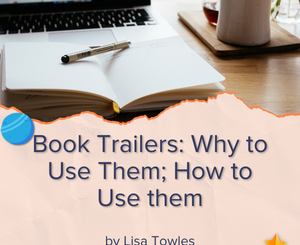The Future of Publishing
I recently discovered Mike Shatzkin, and his genius. Writers, enjoy a look into our future…
The big guys don’t see the fundamental problem
First posted and written by Mike Shatzkin in The Idea Logical blog: 17 Dec 2009 08:58 AM PST
The rapid series of developments in the digital book space and my rising profile mean that I seem to be in an interview with a journalist just about every day. As I was yesterday. The focus of yesterday’s conversation was the Baker & Taylor“Blio” platform that I wrote about last week. How widespread did I think its uptake would be?
The interviewer and I covered a lot of ground, including ebook pricing and timing and whether publishers would be able to make enhanced ebooks work. Those are the topics of the moment (and they are all panel topics at Digital Book World.)
At one point we had a robust discussion about ebook pricing. My interviewer asked me about a pundit’s observation that hardcover books were just wildly overpriced. The implication is that publishers should consider themselves damn lucky that people would pay $9.99 for an ebook, which, after all, has far fewer bytes than a movie they can get for $1.99.
That’s an easy one to answer. What’s a “right” price? Well, from the publisher’s perspective, that’s a question with a clear mathematical answer. (The math wouldn’t yield the same answer for an author.) The right price is the one at which the total gross margin — revenues after all costs — is maximized. We all know more will buy if it is cheaper and fewer will buy if it is more expensive, but the “right” price is the one where customers times margin (margin being revenue minus costs) is the highest it can be.
There is no way in the world that a publisher would maximize margin cutting $28 print book prices to $9.99. So the author of this blogpost being quoted to me might be looking at the “right price” from a consumer perspective or a high-level industry observer perspective, but they sure aren’t looking at it from the perspective of the one who sets the price: the publisher.
At the conclusion of the interview, the journalist on the other end of the phone asked me whether, in effect, publishers would be able to save themselves. “Is there a model,” she said, “which assures that a publisher will profit selling their books in the future?”
Now, I must say before you read my answer, this expresses a long view, not an immediate one. But it sure isn’t comforting to people who sell content for a living.
Is there a model for success selling content? I think the answer to that question is “no.” I’ve spent my lifetime in book publishing and so did my Dad; I don’t like coming to this conclusion. But what I think I see is that selling content as a publisher is a business that is going to just get harder and harder until it won’t really be much of a business anymore.
This has nothing to do with piracy or DRM or Amazon’s promotional ebook pricing. It has to do with the most basic of economic laws: supply and demand.
Until the digital age, content was scarce. It wasn’t scarce because people didn’t create it; it was scarce because it required an investment to distribute it. That’s no longer true. Anybody with an Internet connection can make anything they write (or snap or video or sing) available to anybody else with an Internet connection. For just about free. That’s just one reason — among many — why the amount of content choices available to everybody has mushroomed in the past 15 years.
When the supply of something goes up faster than demand, the price of the something drops. Or, put another way, money flows to scarcity. And content is anything but scarce. That, in a nutshell, is the inexorable problem publishers face. And every day it gets worse. More backlist and out of print and public domain and orphan books get digitized and made available. More bloggers blog. More commercial operations put content online to satisfy their own stakeholders. More videos are uploaded to YouTube and more documents are uploaded to Scribd. All of it is processed and made discoverable by Google and other search engines. And the cumulative effect of all this content being created as something other than new publications for sale is cutting into the market for content that is being created with the expectation of sale.
What is the new scarce item that will attract the dollars if IP is so common that it becomes hard to sell? The answer is the attention of people: eyeballs. And the winning trick for publishers will be to use the content they control — which today does have value — as “bait” to attract the attention of people and then to keep that attention and build a business around it.
Note to some publishers who think they’re doing this: it is not the right answer to simply grab email names and web site registrations as a way to offer the same product catalog over and over again by email blasts. That doesn’t create value for a community and, before long, the community will lose interest and move on. You will lower your marketing costs temporarily with that strategy, but you’re still building a business of selling content and you’ll still, ultimately, deal with the problem that something roughly equivalent to much of what you want to sell will be available elsewhere for free.
I’m far enough ahead of the wave with this insight (if, indeed, time proves it to be an insight) that I can’t really point you to any examples yet from established publishers who followed Shatzkin’s formula to success (although I’m working on a couple that might be worthy of mention by a year from now.) So far, all that is clear is that publishers that stick to an audience fare better in the digital world than the ones who don’t. Their marketing costs are lower and their reach to the audience is both more effective and less dependent on intermediaries.
A stark illustration of this hit my radar screen last month. A major agent told me that he sold a Mind, Body, Spirit author’s book to Random House, which sold 12,000 copies. He sold the next book by the same author to niche publisher Hay House, which sold 200,000 copies! And Hay House, with over a million email addresses of people all interested in the same type of book, probably spent less on marketing to sell eight times as many.
There is one example that points the way for all of us in this business right under our noses every day. It is Publishers Marketplace, the creation of Michael Cader. He didn’t have book content to use as bait for the publishing community, so he created a free daily newsletter, Publishers Lunch about ten years ago. The formula he used — which was novel then and is now a commonplace — was to find the stories of interest to his community every morning and deliver the links to those stories, along with a little commentary, for free. That created an enormous number of sign-ups very quickly and a corresponding amount of grumbling from the established trade press, which would have a) never wanted to show anybody else’s story rather than their own and b) would have expected to sell any content they generated rather than giving it away as Cader did. After all, selling content was the model! (Sound familiar?)
I don’t think it took a year before Cader established his community, Publishers Marketplace, built from the eyeballs that were attracted by the free content in Lunch. Soon he made the “free Lunch” an abridged version, so the “full Lunch” became one of many benefits of “membership” in the community, which comes at a monthly subscription price for the unaffiliated and at site license prices for big companies. It is important to note that the full Lunch content alone wouldn’t keep and hold a community. Rather it is databases of information, many of them created by the contributions of the audience and additional tools and services (such as a free web page for every member) that keep people signing up and paying each month without dropping out.
Publishers have always focused primarily on the content. Survival in the future will require focusing on the market.
Publishers Marketplace and Hay House (and Harlequin and F+W and Interweave and Chelsea Green and all publishers who are dedicated to serving the same community over and over again) are on the right path, one that is very difficult for general publishers to tread. Taking steps to preserve the current marketplace for content — tinkering with DRM and fighting piracy; grappling with the timing and pricing of the content in various formats; even building out from the book as we’ve known it to take advantage of new ways to deliver information and entertainment — are, at best, holding actions. They don’t attack the fundamental problem that is developing for publishers which is this: if you don’t own the audience, the cost of reaching it for one book at a time will be prohibitive.
In the digital age it will make much more economic sense for the owner of the audience to find the content rather than the way we’ve always done it, which is the other way around.







